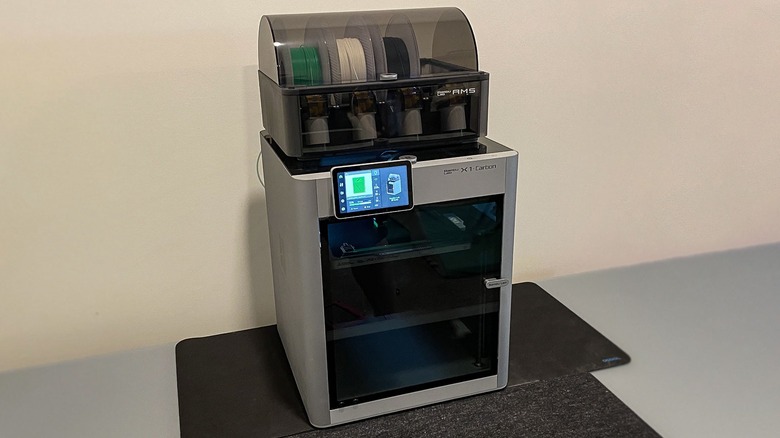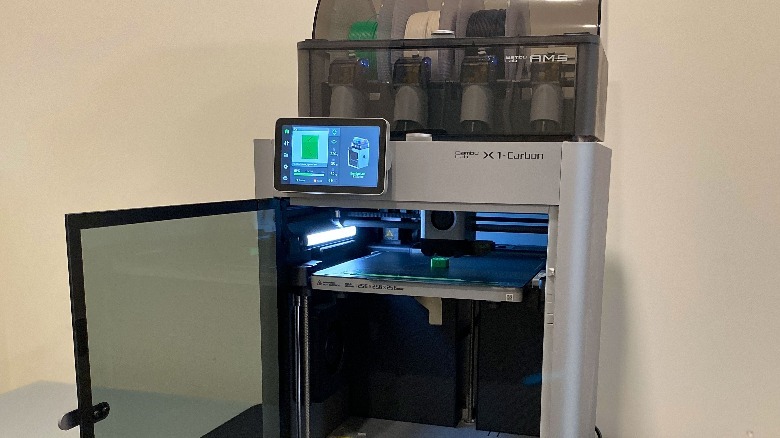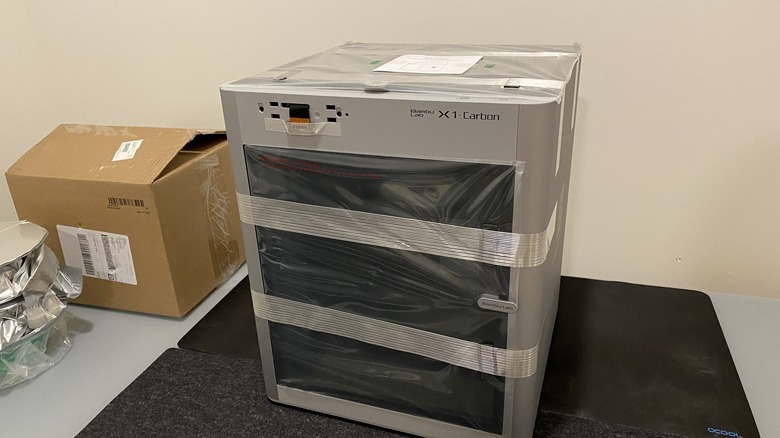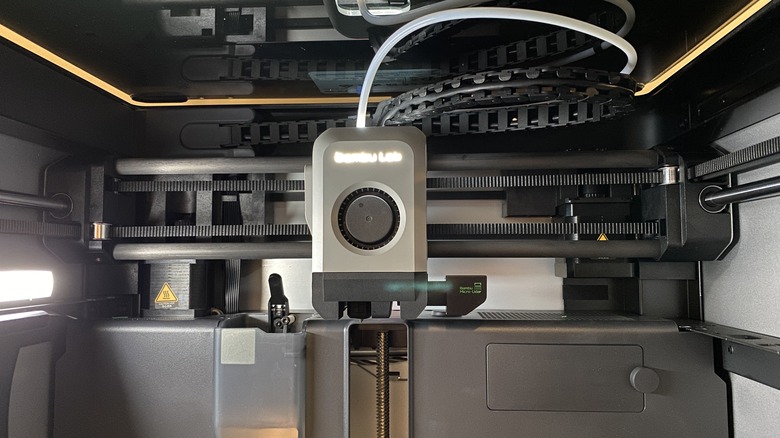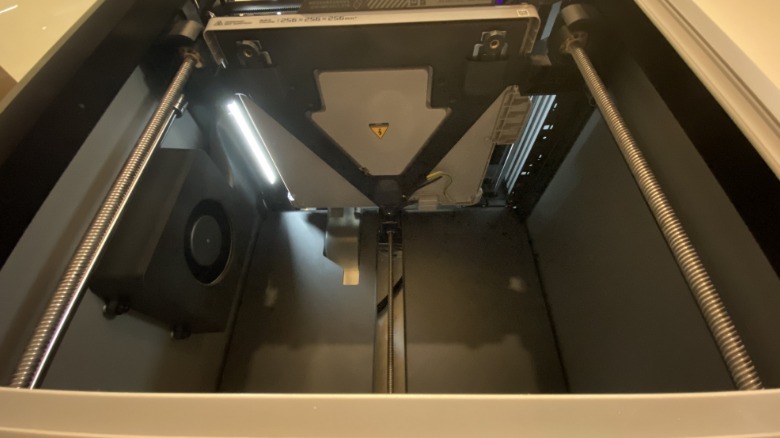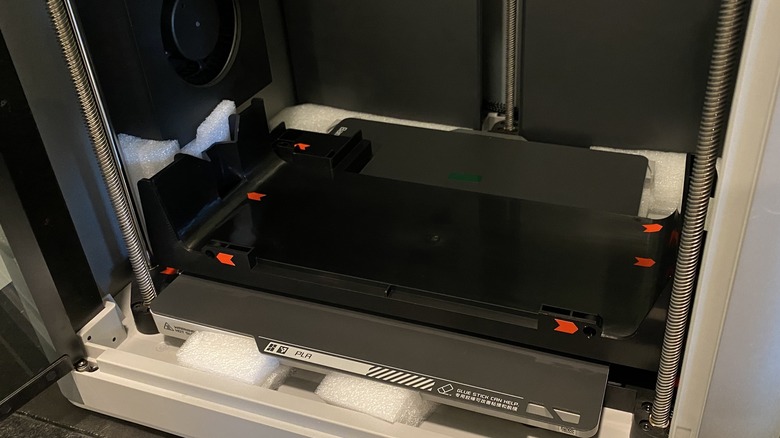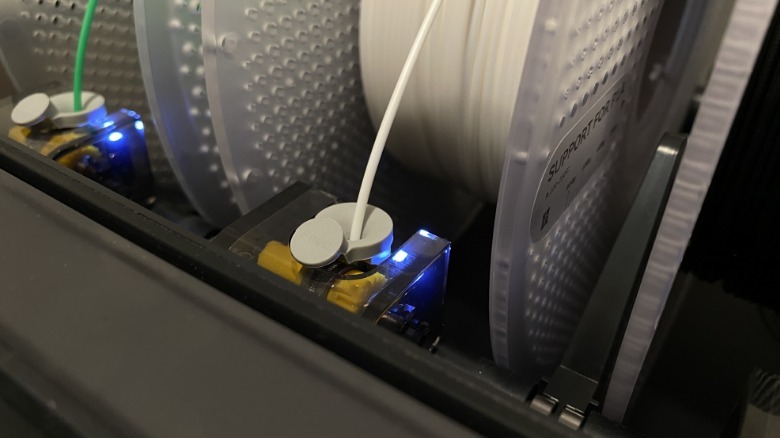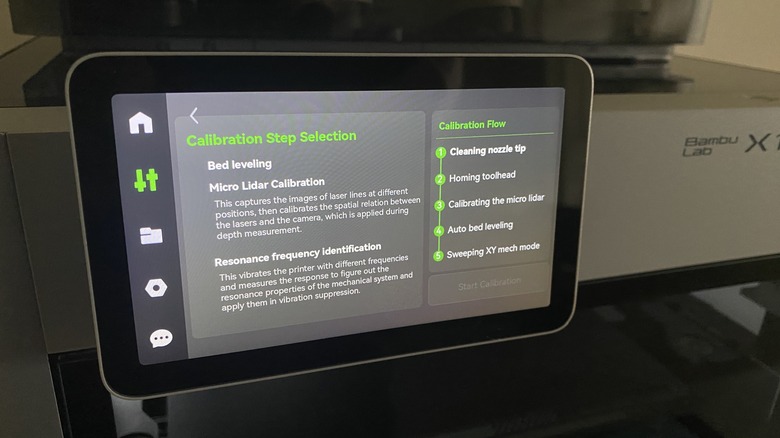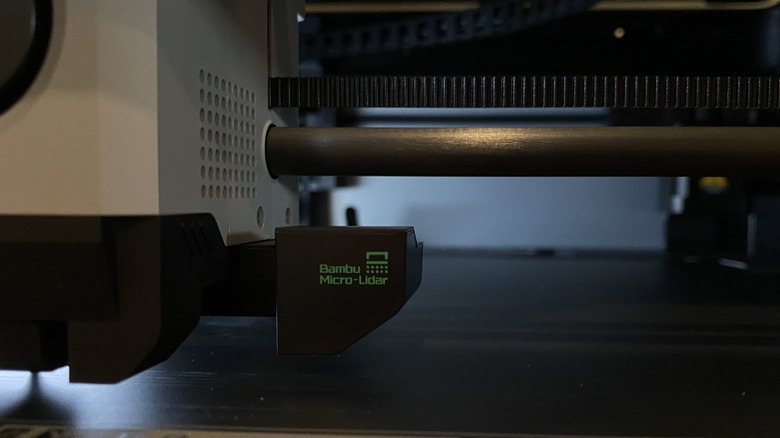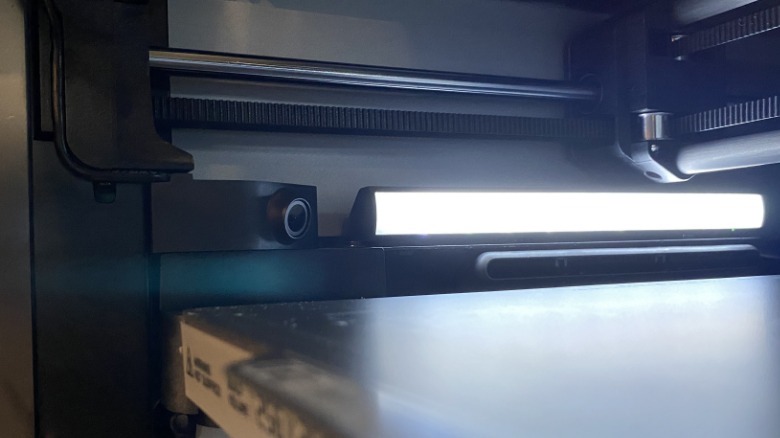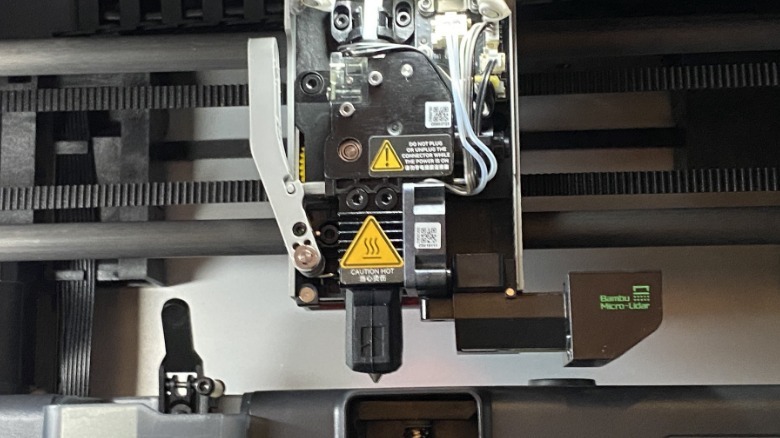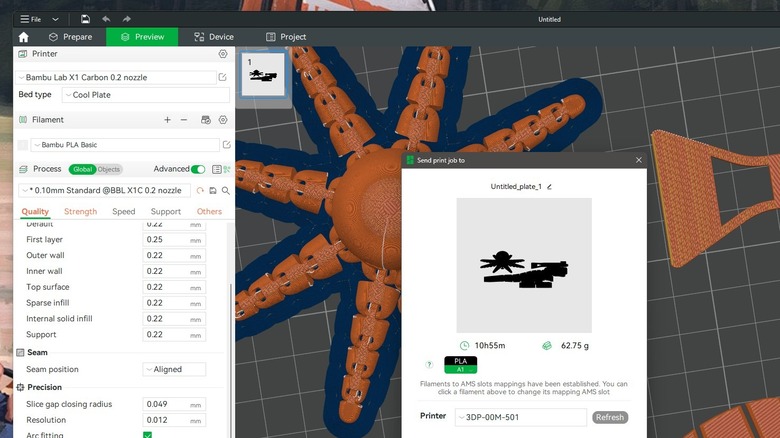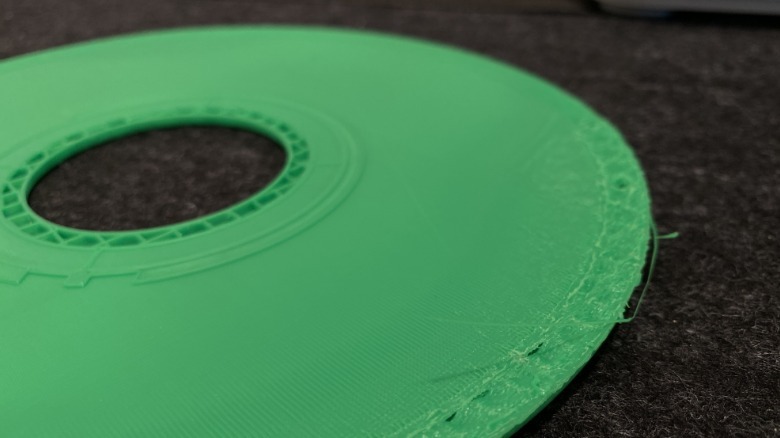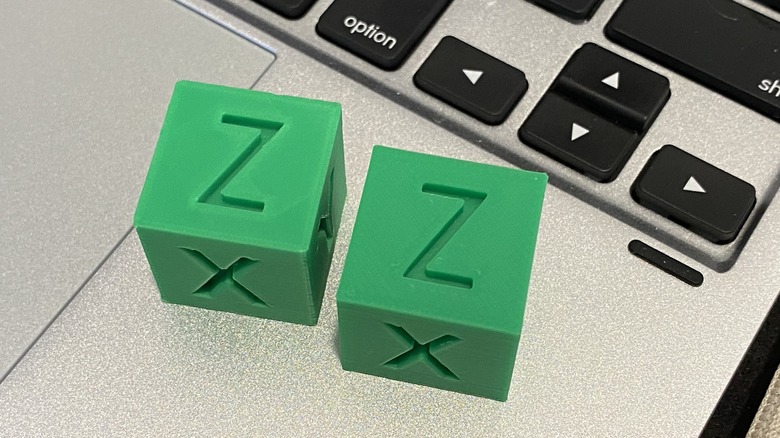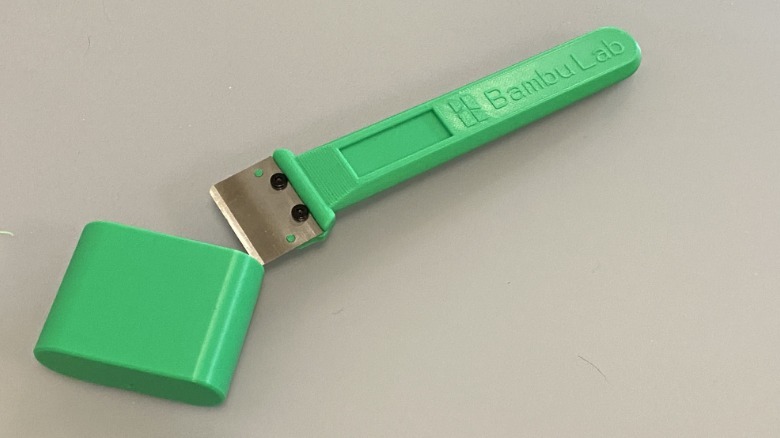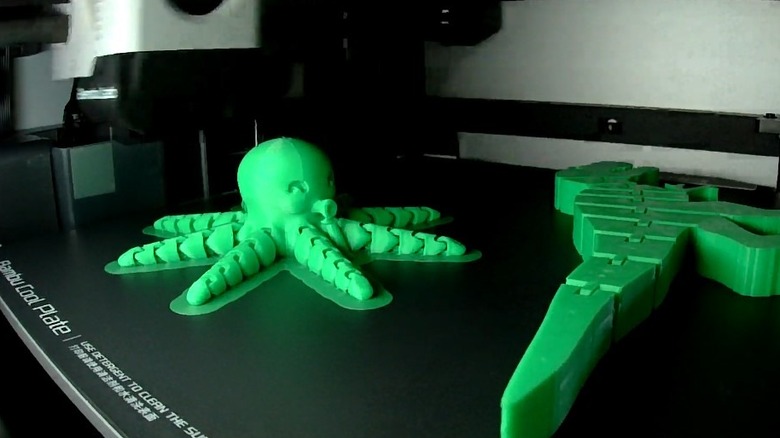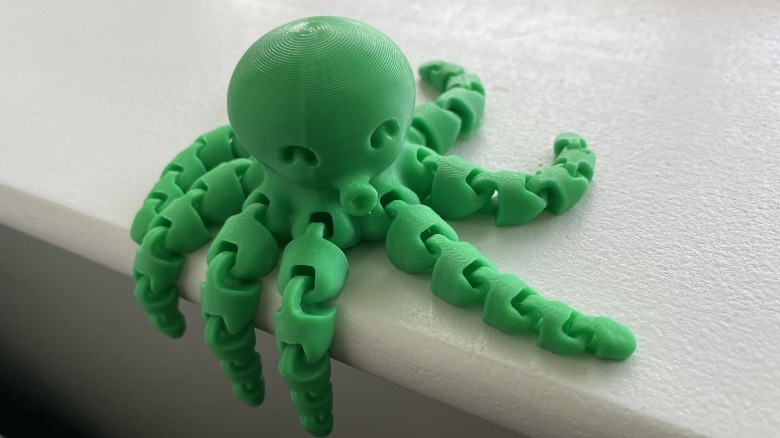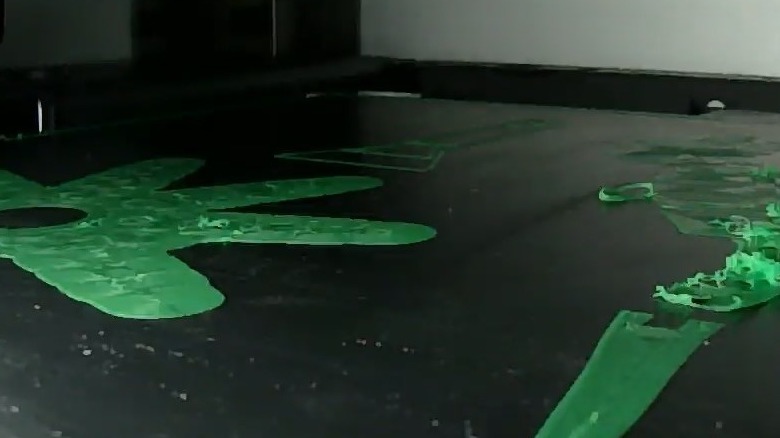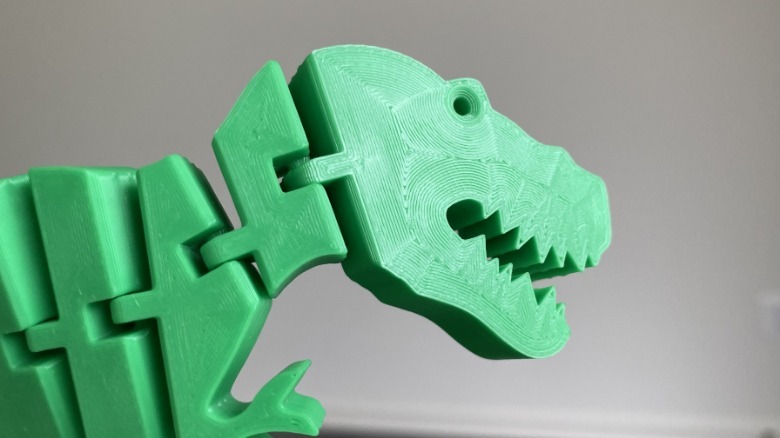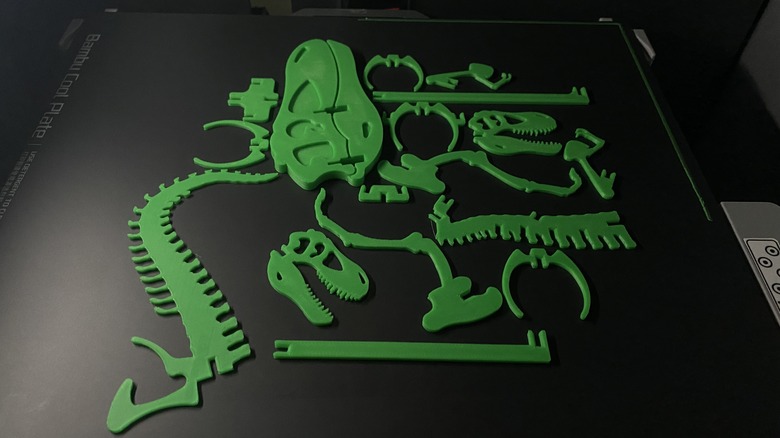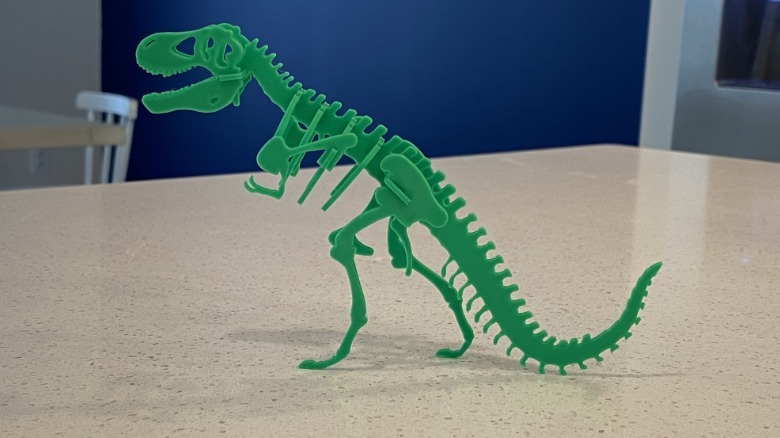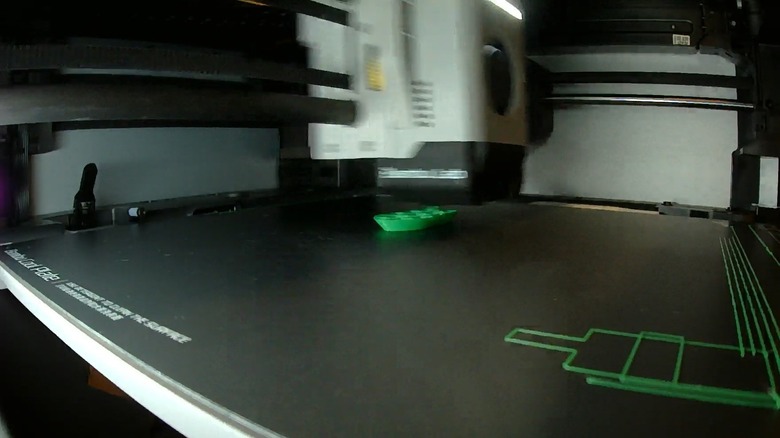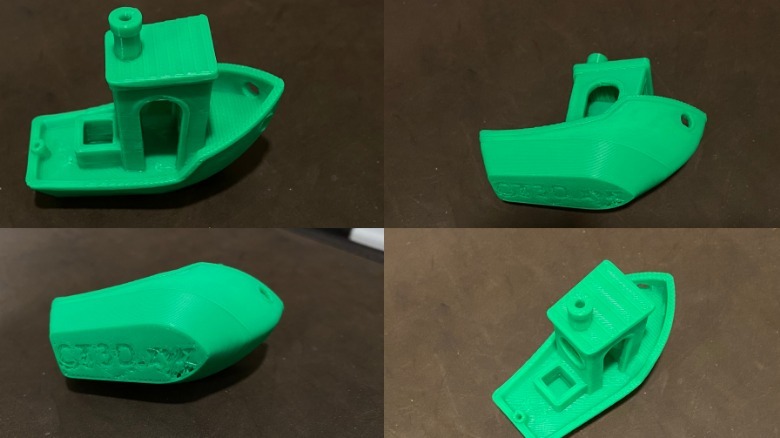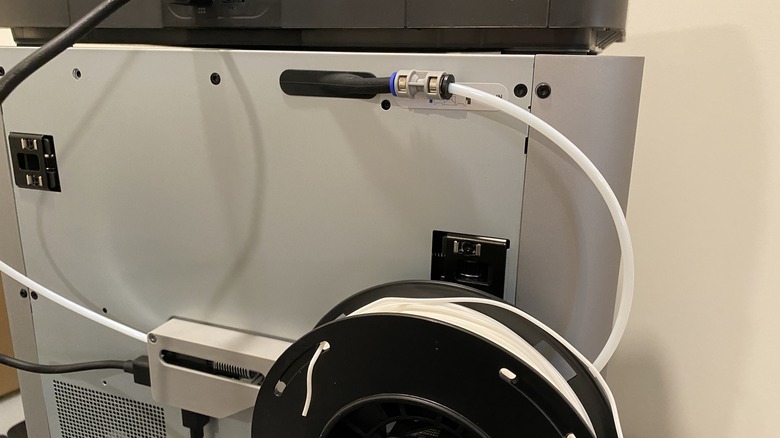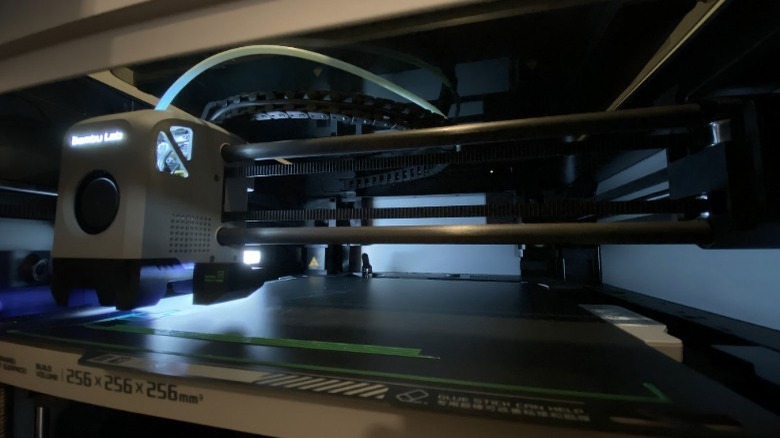Bambu Lab X1-Carbon Combo Review: Professional 3D Printer, Hobbyist Price
- User-friendly setup and use
- Super fast print speeds
- Large print platform
- Well-designed and built
- Handy mobile app
- Still need to tweak settings for the best results
- High material waste if using the AMS
- Considerable price
Not all 3D printers are created equal, and until recently, the choice was between prohibitively expensive professional machines or build-it-yourself, upgrade-it-yourself hobbyist machines that threw you in the deep end and sat on your head. Most printers were also what's known as bedslingers, popularized by Prusa and copied by every other manufacturer as the designs and software are open-source.
That resulted in a race to the bottom for pricing, with affordable 3D printers available without stretching the budget. It also meant a race for the minimal viable prints, often requiring the user to spend hundreds more to get a sturdier, more accurate printer through upgrades.
The printer we've spent a few weeks using (the printer you see reviewed here) is none of these things. The Bambu Lab X1-Carbon Combo with Automatic Material System (AMS) is a prosumer FDM 3D printer using the CoreXY design. It's stuffed with high technology like LiDAR for bed leveling, first layer calibration, vibration compensation, material management, user-friendly design, and a 300 Celcius capable hotend that can print exotic materials like carbon-fiber-infused nylon.
It's perhaps unsurprising the high-tech on offer when the five names who founded the company are revealed. All had high-level roles at DJI, making drones, gimbals, and the AI that powered them. The Bambu Lab X1-Carbon Combo promises to do for FDM 3D printing what the Mavic range did for consumer drones – make them a household name with the hard work handled by the firmware.
What's in the box
The large box the Bambu Lab X1-Carbon with AMS arrived in almost seemed too small for what was expected, which made sense once it was unboxed. The X1-Carbon has a trick for shipping purposes — the AMS unit is bolted inside the printing chamber to save space and protect it from accidental damage.
Inside is also a long cardboard box with most of the accessories and various spare parts for the consumable sections of the printer. The printer has a large, responsive touch screen for controlling prints, a microSD card slot for saving timelapse videos, and print files for later use.
The AMS unit includes some desiccant pouches, extra PTFE tubes for the four feeding mechanisms, a 4-pin and a 6-pin cable, and a couple of spare filament cutter blades. Those cutters go into the printing head to snip the filament before it is retracted to put the next material into play.
Bambu Lab includes a spare 0.4mm hot end assembly, two nozzle wiping pads, a spool holder, 250g of basic PLA filament, an unclogging pin tool for unruly hot ends, extra PTFE tube for feeding filament, two Allen keys, a glue stick for use on the build plate, some parts to build a scraper, and two spare Cool Plate sheets.
CoreXY is the future
The Bambu Lab X1-Carbon uses a CoreXY design, which is essentially the inverse of the bedslinger design used by Prusa and its copycats. Instead of the printhead being on the Z-axis and the bed moving on the X and Y axes, the CoreXY puts the bed on the Z-axis and moves the printhead around the X and Y.
The biggest benefit to this is faster print speeds, as the printhead is of significantly less mass than the bed. This results in fewer artifacts in the printed object, and the algorithms developed by Bambu Lab reduce the vibration even further. Another big benefit is that CoreXY can have a larger print volume with a smaller printer, as the bed doesn't need any room to move around.
There are two major issues with the CoreXY design, both of which the X1-Carbon accounts for. The drive belts can get misaligned or cause issues if the tension is too low or high. The X1-Carbon has tensioning points on the back to adjust for this. The frame can be inaccurate if it's not perfectly square, a problem if making a kit CoreXY unit. The X1-Carbon ships fully assembled and braced so that dimensional accuracy is maintained.
The set-up process
We've used multiple 3D printers over the years, from a little SLA unit from Elegoo that uses UV light to cure a photosensitive resin to the prosumer side of things with Formlabs and various FDM bedslinger designs like the Anycubic Kobra Plus. Most FDM printers come in varying levels of disassembly, and the first task is to bolt everything back together. Most SLA printers are fully intact and require the resin tank to be placed and the unit leveled.
The X1-Carbon has the simplicity of a resin printer, even though it's an FDM one. It comes almost fully assembled and took less than 20 minutes to prepare for the first print. The AMS was unbolted from the shipping support, and then the shipping support was unbolted and removed.
The AMS was plugged in with its power and control cables, and the first filament was fed into the intake. Then the spool holder was bolted on the back in case of wanting to work with spools that aren't suitable for the AMS, like thinner ones or those made of cardboard. Three bolts were then removed that held the hotbed down to its lowest position, which prevented the Z-axis from being damaged in transit. The touchscreen was plugged into its ribbon cable and slid into place on the front of the machine. Bambu Lab's instructions were crystal-clear and included arrows stuck onto the machine to point out the bolt holes.
Calibration time
Then it was time for calibration. The X1-Carbon asks you to download the Bambu Handy mobile app with a QR code pointing to the app store. It guides through account creation and then binds the printer to that account.
After that, it's time for a thorough but hands-off calibration routine. The X1-Carbon starts by cleaning the nozzle tip, then homing the print head. That makes it ready for printing, as the home position is the most important one when dealing with any CNC machine.
It then calibrates the micro LiDAR sensor on the print head with a scannable section on the side of the bed. This can be either a dual IR laser or an IR-blue laser combination, depending on when the printer was manufactured. Both work the same, and the machine will tell you if there is an issue, even if you can't see the laser beam.
The last calibration sequence is an XY sweep of the stepper motors, which identifies any resonant frequencies in the motors and the printer. The algorithms in the printer's firmware then counteract the unwanted effects of those frequencies while printing. It's similar to how a gimbal keeps a video camera steady when moved, resulting in fewer failed prints.
Standout features
The X1-Carbon is full of technological innovation, even in a field like 3D printing, where constant advances happen. The micro LiDAR scanner is used to level the bed automatically, but it's also used to check the width and consistency of a series of test lines so the printer can calculate flow rates for the filament. It's also used for inspecting the first layer for quality to stop major issues in the first stage.
The chamber has a 1080p camera, which can record video for time-lapses and monitor prints in real time using the Bambu Studio slicer or the Bambu Handy mobile app. It also does AI recognition on the print to check for spaghetti issues when a print fails due to detachment, collapse, or incorrect G-code.
The extruder has a large fan to keep temperatures in check and a hotend assembly that can print at 300C, enough for carbon fiber or glass-strengthened materials. The hot end comes off with two bolts and has a silicone sock to keep it relatively clean from filament. The extruder also houses a lever for the filament cutter blade and is transparent to show any potential blockages and the LiDAR sensors.
The software
All 3D printers need slicing software, which takes the 3D model created and turns it into G-code to control the printer. For the X1-Carbon, the slicer is called Bambu Studio, and it's based on the PrusaSlicer developed by Prusa and tweaked for the needs of the faster CoreXY printer. Turning 3D models into printable files took mere minutes. The X1-Carbon has stable, fast WiFi, so sliced files can be sent over the network without needing USB drives to transfer. Bambu also sends it to the cloud so that the mobile app can reprint from its history function. Files transferred in this way automatically delete after 90 days.
The Bambu Handy mobile app can't slice models but it can start print jobs from previously prepared ones. It also can monitor the print from the camera, change settings like temperatures and speeds, and manually move the bed and print head around when not printing.
We're not quite sure if the quality of the slicer or the quality of the printer or both was responsible, but we rarely had any failed prints. One went into spaghetti mode fairly quickly as we put too much glue onto the build plate, so it didn't adhere properly. Another lifted off on the side furthest from the cooling fan, possibly due to the bed not being hot enough.
Calibration prints
The first prints we did were a series of 20mm calibration cubes. These have inset letters on the sides corresponding to their axes, to show if the printer is out of true or has other undesirable issues to rectify. The first print is on the left in the above image, and it shows a decent but underwhelming surfacing effect on the top layer and very rounded corners and edges.
It turns out those are from the input shaping the X1-Carbon does to maintain its high speeds. Changing the radius from its default setting of five to one and setting adaptive layer heights resulted in a slightly longer print but a far more acceptable cube. The edges are crisp and clean, the bottom and top layers are filled in properly, and the lettering is more distinct.
Our third print was a scraper handle to help lift stubborn prints from the print plate. This is inbuilt into the printer's firmware, and a few taps on the touchscreen were all needed to get it going. It printed the first time, lifted off the bed, and the scraper blade and screws that Bambu supplies added. It's a little sharp for the cool side of the plate but is great on the engineering side.
In-place print quality
One of the fun things about 3D printing is that prints can be designed to have moveable parts while printing in one operation. Think links of a chain, pivoting hinges, or even more exciting things like flowing hair.
We decided on a Cute Mini Octopus by a designer called McGybeer, and a Flexi-Trex by Benchy4Life. The octopus has chain-link style arms that flop and flow around once printed. The T-Rex has hinged sections to swivel slightly left and right. Both test a 3D printer's handling of overhangs, fine detail, layer adhesion, and layer accuracy. Both were printed at the same time, with minor tweaks to the slicer settings to set supports up if necessary, run adaptive layer height, and use a concentric surface pattern to help with the octopus' shape.
The first attempt was one of the only failed prints in our testing. The octopus was printing fine, while the T-Rex started to lift off the bed and turn into spaghetti fairly early on in the print. We put that down to a thicker-than-normal layer of glue stick, used to help loosen the print when done.
After washing off the glue with dish soap and then isopropyl alcohol and adding some rafting, round two printed perfectly; three hours and fifteen minutes later, we peeled the prints off in glee. It just goes to show that even on a powerful, calibrated 3D printer, things can and will go wrong.
Printing a puzzle
Next came a model from the included sliced files already on the printer. Anyone who's been in a museum gift shop knows the balsa wood T-Rex bone 3D puzzles, and Bambu Lab includes a printable version. This flat, thin print tests the printer's adhesion qualities as the pieces easily warp and pull off the build plate if the conditions aren't quite right.
The X1-Carbon printed it off in one go, without glue stick application or modifying any printer settings. The resultant print was straight, without any hint of warping. Every piece was dimensionally accurate, which is just as well as it needs the pieces slotting together with a friction fit to stay together.
The pieces have a nice surface finish, with some visible lines from the printing process. If we had wanted, the file could have been tweaked in the slicer with the iron feature set. This runs the hot end over the top layers more, extruding a little more material for a smoother surface finish.
A need for speed
The 3DBenchy is a true test of any 3D printer's accuracy. In the early days of 3D printing, users spent days tweaking every part of the slicer settings to get printed models accurate to the 3D file.
We didn't want to do that because seeing what the X1-Carbon can do out of the box is more fun. We used the file preloaded in the printer and the model downloaded from the creator to ensure no customized tweaks on Bambu Lab's version. We only changed one major setting on the printer — the speed from Normal, 100% speed, to Ludicrous mode, 166% speed. We also changed the bed temperature from the default 35C to 55C to try and aid in adhesion.
It turns out that the increased bed temperature was a mistake, leading to misformed words on the bottom layer and a few gaps. The rest of the print was pretty decent, especially when considering that the X1-Carbon can print a Benchy in 14 minutes. According to the designer, most home 3D printers can print one in under two hours. The second print took the same time, but with the default bed temperature, the bottom lettering was crisp and as intended.
Cleaning and maintenance
Every 3D printer will require constant maintenance and attention. Without building it from a kit in the first place, knowing what to do and when might be tricky. Bambu Lab has a comprehensive Wiki that we've referred to constantly as the testing was going on.
The maintenance covers things like wiping the carbon rods used on the X and Y axes for dust and buildup and greasing the Z-axis lead screws so the bed moves freely. This is a fairly basic step, but the printer will tell you if more important tasks need doing, like cleaning the LiDAR sensor off.
The activated carbon filter needs changing every so often to keep the exhaust fumes down. We didn't notice any buildup of particles or chemicals when running the X1-Carbon, with a Molekule Air Purifier that is stationed next to the printer table. We haven't noticed any issues in our limited testing time, but it seems like the printer will tell us if any electronic parts go faulty with troubleshooting steps to find out the root cause.
Bambu X1 Carbon with AMS verdict
As reviewed, the Bambu Lab X1-Carbon Combo with AMS costs $1,449. That's a lot of money for an FDM 3D printer, but for that price, you get reliability, LiDAR automatic bed leveling, an automatic material handling system, high-resolution printing, and impressive print speeds.
If you want the speeds and don't care about the exotic materials the X1-Carbon can use, Bambu Lab has the $699 P1P model, which is almost the same printer but without the enclosure. The side panels can be printed, and there is a thriving community of designs to choose from.
Bambu Lab is well on its way to becoming the DJI of 3D printing, accessible for beginners while having enough depth to satisfy even the most technical users. 3D printing will probably always need tinkering and tweaking to get perfect prints — that's the nature of the technology. The Bambu Lab X1-Carbon Combo with AMS lowers the bar of entry, removing the laborious bed leveling steps, the irritation of prints failing but continuing to try and print, and the length of time it can take to find out whether a prototype is viable or not.
It will take a superb effort by any other company to clear the bar Bambu Lab has set here, and only if it stops designing more printers. The only issue here is the amount of wastage the AMS system needs to clear the hotend and change materials. If that can be optimized, this printer can crank out awesome designs with little wastage.
